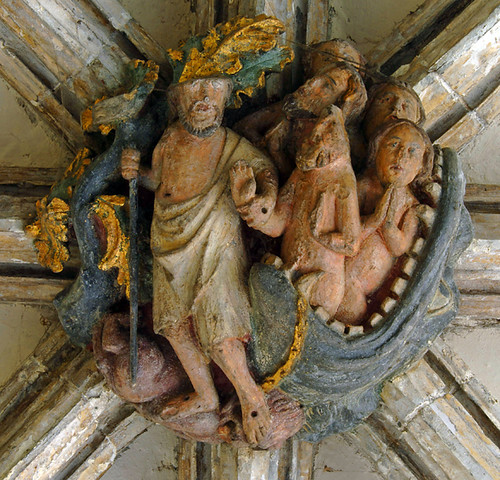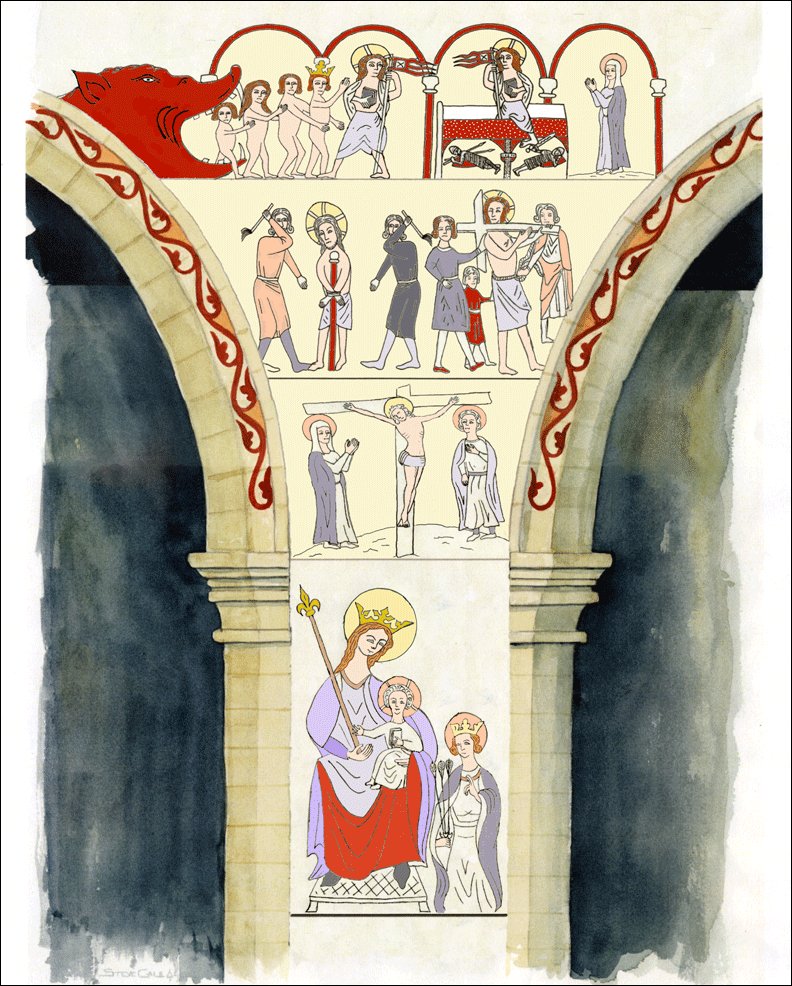Images of #Easter  https://abs.twimg.com/hashflags... draggable="false" alt=""> from #medieval East Anglia: for Holy Saturday, the Harrowing of Hell. A non-Biblical story which was popular in the #middleages, it describes Christ descending to hell between his crucifixion and resurrection and leading out deserving souls #medievaltwitter 1/8
https://abs.twimg.com/hashflags... draggable="false" alt=""> from #medieval East Anglia: for Holy Saturday, the Harrowing of Hell. A non-Biblical story which was popular in the #middleages, it describes Christ descending to hell between his crucifixion and resurrection and leading out deserving souls #medievaltwitter 1/8
The Harrowing of Hell is depicted in one of the many carved and painted #medieval bosses in @Nrw_Cathedral 2/8
Souls exiting hell in orderly single file can be seen in the remains of the mid-14thC scheme of wallpaintings in St Mary& #39;s Lakenheath 3/8
The Harrowing of Hell at St Mary& #39;s Lakenheath was conserved as part of a larger #medieval wallpaintings project at the church a few years ago. You can find out more and see more of these wonderful digital reconstructions at http://www.lakenheathwallpaintings.co.uk/index.html ">https://www.lakenheathwallpaintings.co.uk/index.htm... 4/8
The Harrowing of Hell was also a popular topic in #medieval literature. The Old English Blickling Homilies (named for the Norfolk estate which once housed them) is one of the earliest sermon collections known from medieval England and contains vivid descriptions...5/8
...such as & #39;the iron bolts of hell& #39;s locks& #39; being broken as souls & #39;are raised out of the fiery sulphur& #39; as Christ & #39;felled the old devil and cast him down into hell& #39;s abyss& #39;. It is a vivid story but I suspect it& #39;s popularity in the Middle Ages was largely down to hope. 6/8
In the Harrowing of Hell in the early 9thC Book of Cerne (one of the earliest works of drama known from #medieval England) Eve pleads with Christ & #39;do not turn the face of your mercy away from me, do not, in anger, shun your handmaiden.& #39; 7/8
For the medieval Christian, if even Adam and Eve were rescued from hell, just as we see in the Harrowing of Hell wallpainting at St Mary& #39;s Lakenheath, then surely there was hope for everyone? 8/8

 Read on Twitter
Read on Twitter




